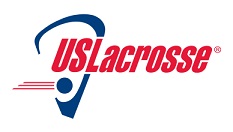
 www.uslacrosse.org
www.uslacrosse.org
US Lacrosse: As the national governing body, US Lacrosse provides leadership, structure and resources to fuel the sport's growth and enrich the experience of participants. With more than 440,000 members nationwide, as well as 68 chapters in 45 states and more than 80 full-time staff members, the organization is committed to providing a leadership role in virtually every aspect of the game.
Sports Destination Management: Lacrosse has been growing nationwide, particularly at the youth level.

SDM: Last year, there was discussion about head protection for girls’ lacrosse.
Stenersen: US Lacrosse actually led the development of an ASTM standard for women’s headgear; that standard was approved in May of 2015. We are very proud of being given the opportunity to help the industry develop a product that meets that standard; we expect that product to be available in January of 2017. We feel we have led very responsibly in that regard.
SDM: In terms of the sport’s growth, which gender is seeing more participation?
Stenersen: The sport is roughly two-thirds boys and one-third girls; however, the highest percentage of growth is in the girls’ game. A big driver is the increased visibility the sport is getting. It is the fastest-growing varsity sport at the NCAA level.
SDM: What does US Lacrosse look for in a tournament host city?

There’s an attractiveness to a quality venue located in or near a cool city. The teams might not have a lot of time to explore the surrounding area since they don’t build in a lot of days for R&R – but if they do have some time, they might visit. Obviously, they need quality accommodations close to the venue.
SDM: What sets apart a good tournament?
Stenersen: We see a variety of events, some of which are very well run and some of which are not. A good event has well thought-out emergency planning. Some tournaments do not invest in appropriate safety measures, and that is a very, very serious mistake. Accidents happen on every field in every sport. In our role as the national governing body, we become the complaint department for the sport. When something goes wrong, we hear about it, whether we were involved with that tournament or not. Emergency planning and safety are things every parent should ask about; they shouldn’t just expect them.
SDM: Does US Lacrosse sanction events?
Stenersen: We piloted a sanctioning program last year. We started with five or six events in 2015 and we doubled that number this fall. The challenge with sanctioning is that any organization can charge a fee and sanction an event and slap their name on it. We want US Lacrosse sanctioning to mean something. If something carries our brand, we want to show that it’s differentiating itself. At the same time, if you ask a tournament to do too much, people won’t apply. We want to balance it.
 SDM: What else is US Lacrosse involved in?
SDM: What else is US Lacrosse involved in?
Stenersen: In our athlete development initiative, we’re looking at how we introduce the sport to kids, and we’re getting behind small-sided play. Our model is not about ignoring the world-level players as much as it is about retention of players regardless of their level of ability. Not every kid is going to be an elite athlete, so we need to put more focus on the other 90 percent of the kids. For them, sports should be a positive and transformative experience. It should be teaching them teamwork, socialization and physical fitness.
SDM: What other plans does the organization have?
Stenersen: Lacrosse is currently not an Olympic sport. We anticipate an application for provisional recognition from the IOC will be submitted within the next 90 days. We’re certainly hopeful and optimistic that lacrosse and its international federation will receive recognition. Being able to put the five rings on our stationary would be a game changer.

